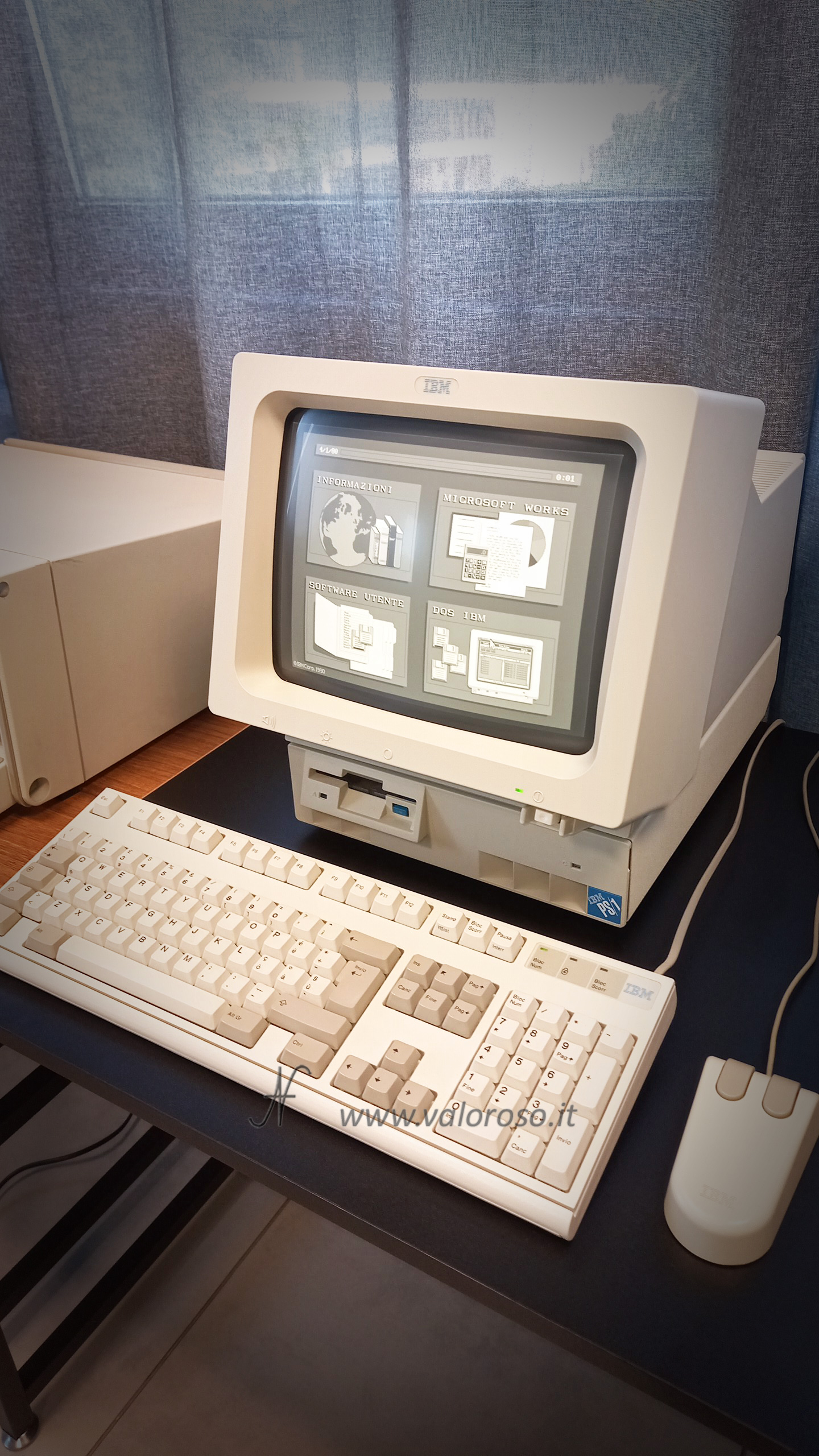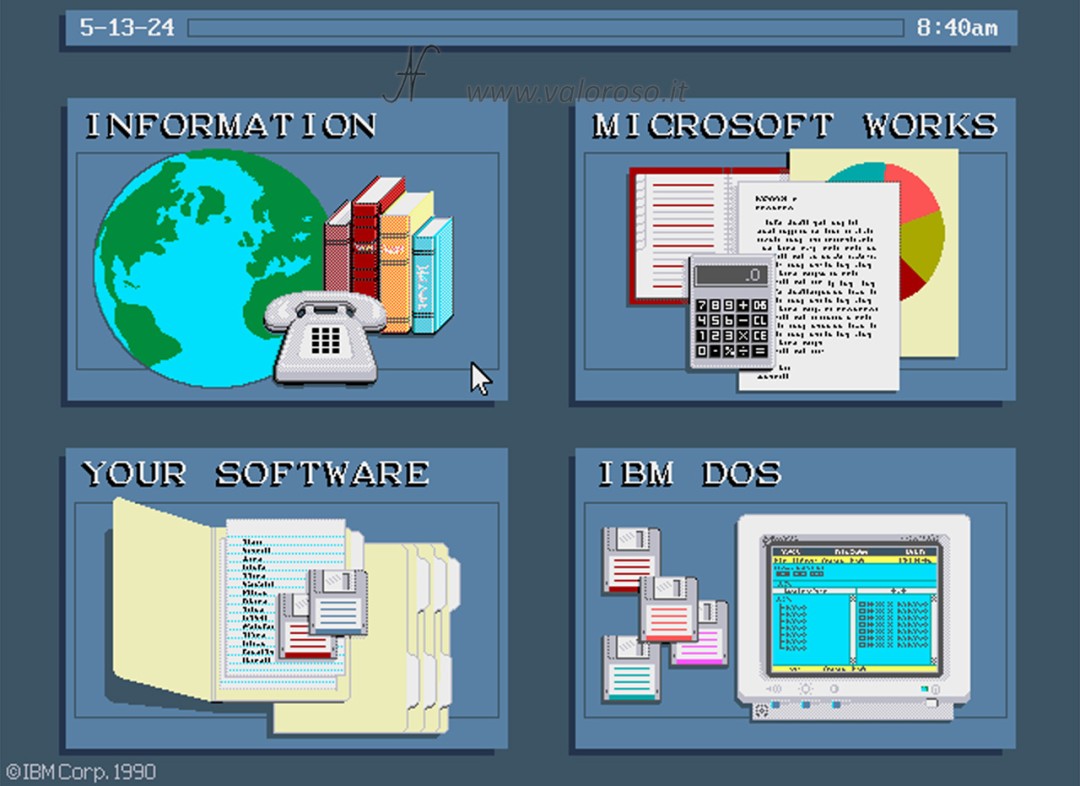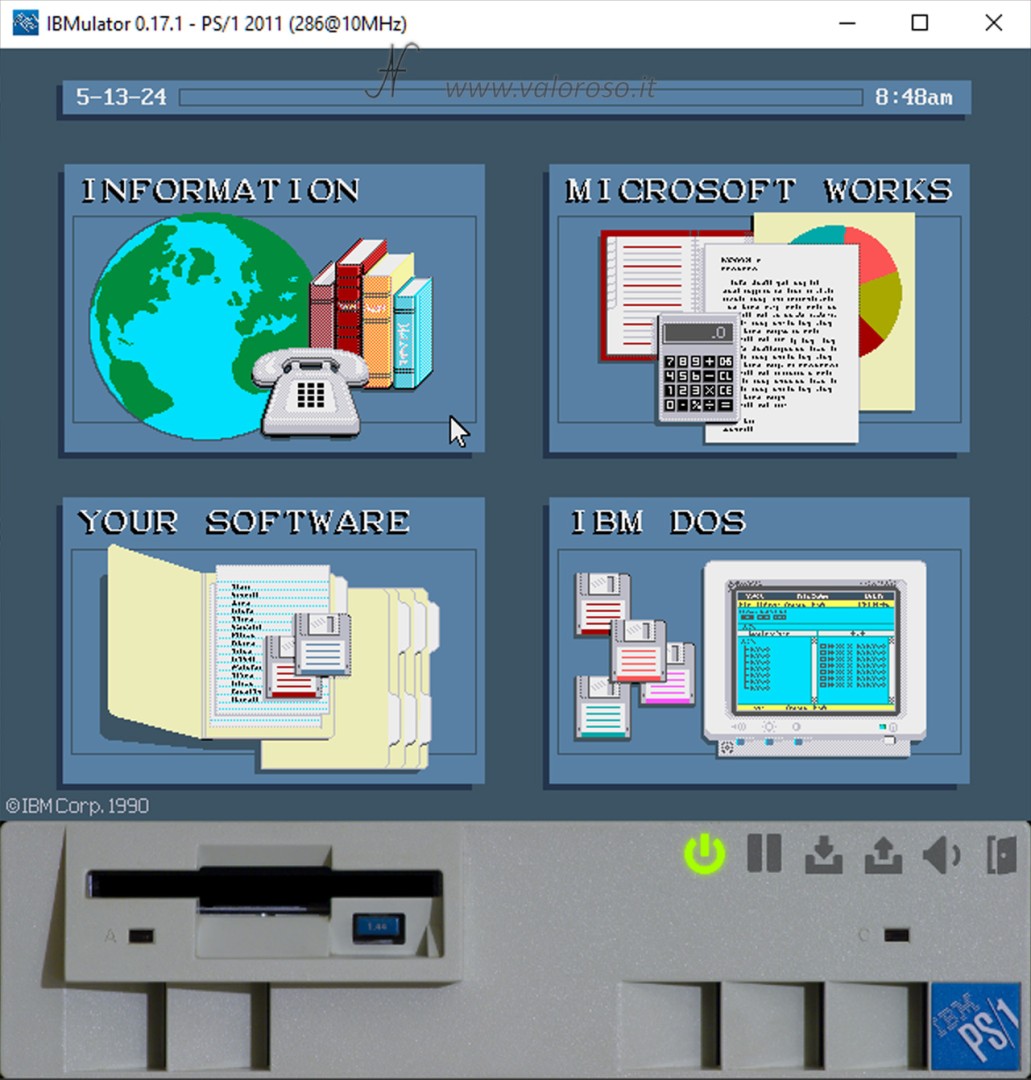I bought, from a friend of mine, an IBM PS/1 Model 2011. The computer was sold to me at a good price, but it presented defects to be fixed, such as the classic errors 161 and 163 at the lighting.


To solve the problems of the clock and the configuration loss, I mounted the necessary spare part: the modern equivalent of the Dallas DS1287, nwX287. In doing so, the floppy disk drive, which initially did not work, also restarted.

The computer was sold to me with its original black and white monitor, but without keyboard. Subsequently, they gave me a color monitor which, however, has some problems and, connected to nutrition, has started smoking!
Subsequently, I was able to repair the color monitor, replacing the RIFA capacitor: the supply voltage filter capacitor.
I only found the original keyboard and mouse later, online.

The keyboard seller had assured me that he was working, but unfortunately he had keys that did not go. I had to fix it and, I assure you, it's not a fun operation at all!

Finally, I also purchased the serial expansion, in order to connect the computer to other PCs by means of FastLynx or via WiFi modem.

But the story does not end there: I also had to replace the hard disk, because the one present on the computer, from time to time, blocked. I installed a new 30mb hard disk, WDL-330P, only after replacing capacitors who lost electrolyte liquid.
Finally, I planned Eprom to start the computer in English, in the place that in Italian. The operating system is located inside the Eprom. I also copied all the original files on the hard disk, to get a computer ... as if it were just purchased!

IBM PS/1 model 2011
The IBM Personal System/1 Model 2011 is an entry-level band desktop, intended for domestic use, produced by the International Business Machines Corporation (precisely IBM) starting from 1990. It is equipped with an Intel 80286 processor at 10MHz and 1 MB of RAM expandable up to 2 MB by means of a dedicated expansion card. The particular aspect is that the IBM PC DOS version 4.01 is already installed in the computer of the computer.

Relativamente ai supporti di archiviazione dei dati, l'IBM PS/1 model 2011 è dotato di un lettore di floppy disk interno, da 3.5", 1.44MB. E' presente un hard disk che, però, ha alcuni settori danneggiati e dovrò sostituirlo.
Startup screen
The computer starts with diagnostic tests, which are not visible to monitor except in the case of error. After the initial self test, the computer starts with the IBM PC DOS version 4.01 pre -installed in ROM, with the pretty screen with four pane.

Subsequently it is possible to launch any other applications present on the hard disk or floppy.
Technical characteristics of the IBM PS/1 model 2011
CPU: Intel 80286, 16-bit, 10 MHz
RAM: 1 MB, expandable up to 2 MB
ROM: 512 KB (contains the post = power on self test, the BIOS = Basic Input-Output System and the IBM PC DOS V 4.01 Pre-installed)
Graphics: Integrated VGA graphics card, 256KB RAM, DB15 output for VGA monitor
Text mode: 80 columns x 25 rows or 40 columns x 25 rows (16 colors)
Graphics mode: 640 x 480 pixels (16 colors) or 320 x 200 pixels (256 colors)
Audio: beep from monitor
Keyboard: External PS/2, such as the IBM Model M2 mechanical keyboard

Supplied software: IBM PC DOS version 4.01 (in ROM)
Supporti di archiviazione: n. 1 floppy disk drive interno, 3.5", 1.44 MB e n. 1 hard disk interno

Expansion ports, internal:
- Connector for floppy disk drive 34 poles (non -standard, because it also brings power)
- 44 Poli hard disk connector (the format is the owner and also brings the power supply)
- 20-pole serial card connector (proprietary format)
- Sound card and joystick connector (proprietary format)
- RAM expansion connector (proprietary format)
- Port for ACU (Adapter Card Unit, always in proprietary format)

Expansion ports, external:
- PS/2 keyboard
- Mouse PS/2
- Centronics
- Optional: serial (DB25)
- Optional: audio + joystick
- Monitor (DB15)
- 36V power input (DB15)
Size and weight: to be measured
Emulation
The IBM PS/1 Model 2011 computer starts with IBM PC DOS operating system. It is possible to emulate the MS-DOS environment with Dosbox (although Dosbox is an emulator for X86 systems).
Another very nice emulator, specific for the IBM PS/1 Model 2011 is IBMulator, an open source project that can be downloaded for free from Github. To work, ibmulator needs the Bin file that contains the computer of the computer. This file can be found on the internet or can be obtained from an original PS/1 IBM/1, performing the romdump.exe utility.

Power supply
The PS/1 Model 2011 personal computer power supply is inside the monitor. Posteriorly to the monitor, there is the IEC C14 power connector, where you can connect the network power cord. The monitor brings the power supply voltage (36V in continuous current) to the computer, which is then adjusted via the mounted card on the motherboard. The monitor connects to the computer via two cables: the VGA and the power supply.


The power switch is on the monitor, in front, and turns on both the monitor and the computer at the same time.
Papers
1. IBM PS/1 Model 2011 technical reference
2. IBM PS/1 Model 2011 user's reference